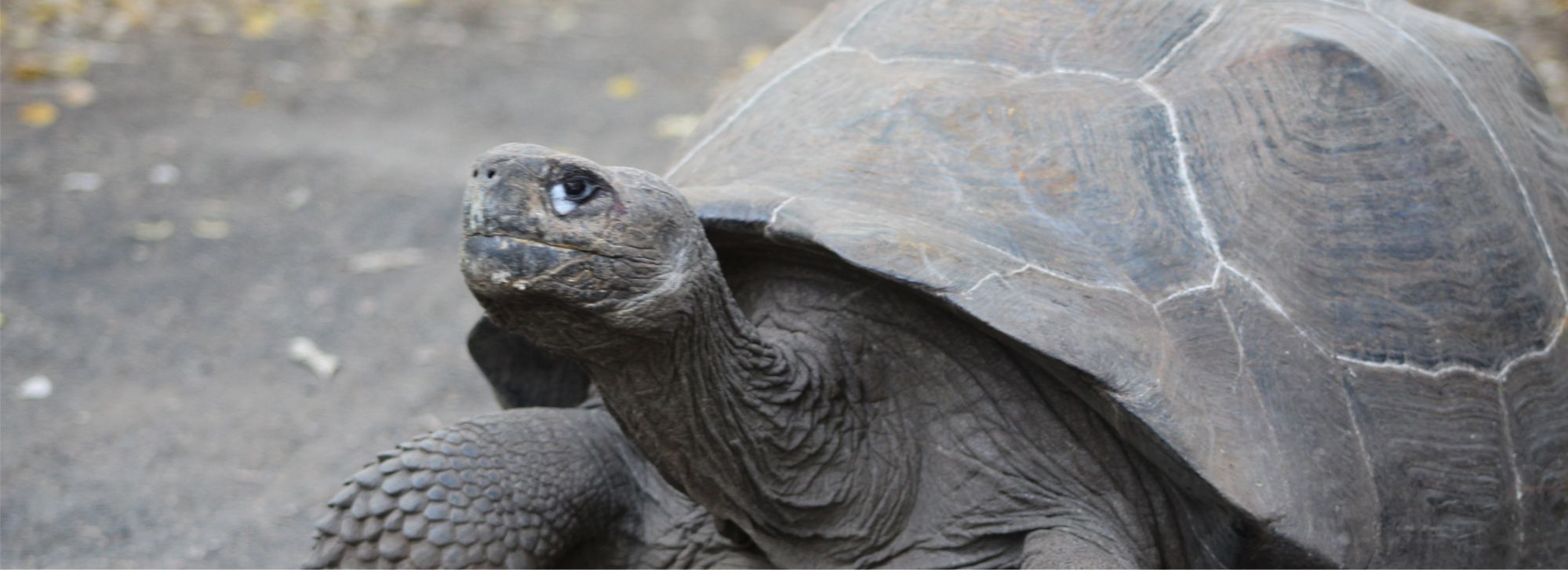Fragments for a history of Galapagos
The discovery
In 1535, during a trip between Panama and Ecuador, Spanish bishop Tomás de Berlanga was diverted from his route by calm winds and strong prevailing currents and became the first known European to land in Galapagos (March 10).
That same year, from Portoviejo (current Ecuador), he wrote a letter to King Carlos I describing the archipelago: Carta a Su Majestad de Fray Tomás de Berlanga, describiendo su viaje desde Panamá á Puerto Viejo, e los trabajos que padeció en la navegacion ["Letter to His Majesty from Fray Tomás de Berlanga, describing his journey from Panama to Puerto Viejo, and the labors he suffered in navigation"] (April 26).
There he recounts that, after departure, his ship had 7 days of favorable winds and another 6 of calm. During the latter, the currents pushed it to an island, which was sighted on March 10. They had enough water for 2 days, so they sent a boat to seek a spring. They didn't find but sea lions, and tortoises so big that they could carry a man on them, and a lot of iguanas "that are like serpents".
The next day they saw a different island, bigger than the first and with big mountains, and they went there, believing that, because of its size, it would have "rivers and fruits". When they could disembark, they were already without water in the ship, and they couldn't find it on land, so they had to cut opuntias' leaves and drink the sap.
On Easter Sunday, Berlanga said mass, and the crew ended up finding some water, but by then two men and ten horses had died of thirst.
From that island they could see other two, a bigger one and a medium-sized one. Berlanga found out that the islands were about one grade below the Equinoctial. There were sea lions and iguanas again, as well as giant tortoises, and many birds like those from Spain, but "so silly that they didn't know to flee". There were shining stones in the beaches that Berlanga mistakenly took for diamonds and amber, but the land was so stony that, in the bishop’s opinion, nothing could be harvested there.
With a good provision of water, they navigated 11 days without sighting land and, after correcting the course, and worried again about the scarcity of liquid, they went further another 10 days until they arrived "to the bay and river of the Caraques, Friday, April 9".
Officially, nobody searched for the Galapagos Islands, and nobody landed on them again until 1546, when Spanish conqueror Diego de Rivadeneira arrived at the archipelago by accident. In 1569 the islands were added to the map by Mercator, and from there on, a long list of sightings arrivals is included in the history of Galapagos.
[The photograph that illustrates this text was taken by Edgardo Civallero].
References
Carta a Su Magestad de Fray Tomás de Berlanga, describiendo su viaje desde Panamá á Puerto Viejo, e los trabajos que padeció en la navegación. En Pacheco, Joaquín F.; Cárdenas, Francisco de; Torres de Mendoza, Luis (comps.). Colección de documentos inéditos relativos al descubrimiento, conquista y colonización de las posesiones españolas en América y Oceanía... Madrid: Imprenta de M. Bernaldo de Quirós [etc.], 1864-1884, tomo XLI, pp. 538-544.
Text & picture: Edgardo Civallero (edgardo.civallero@fcdarwin.org.ec).
Publication date: 1 May 2022
Last update: 1 May 2022
